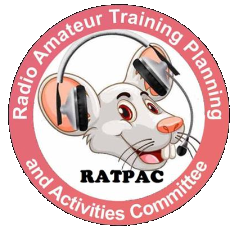Tad Cook, K7RA, of Seattle, Washington, reports for this week’s ARRL Propagation Bulletin, ARLP0013:

This solar disk image was taken |
A dramatic increase in solar activity emerged over the past week, and geomagnetic activity reacted as well.
Two new sunspot groups appeared on March 21, then one new group emerged each day over March 22 – 25.
The average daily solar flux rose from 153.3 to 191.9, and the average daily sunspot numbers increased from 94.3 to 147.
The highest sunspot number over last week was 171 on March 22, which was the highest sunspot number since November 22 – 25, 2023, when the numbers were 174, 176, 184, and 179.
The average daily planetary A index jumped from 5.9 to 25.4, and middle latitude numbers rose from 5 to 19.
On March 24, the college A index in Fairbanks, Alaska, reached 100! The planetary A index was 64.
Looking ahead, the solar flux is predicted to reach a peak of 210 on April 23 – 24. The projected solar flux is 180 and 175 on March 28 – 29; 170 on March 30 – 31; 175 on April 1 – 3; 180 and 185 on April 4 – 5; 190 on April 6 – 7; 185, 180, 175, and 180 on April 8 – 11; 185 on April 12 – 13; 190, 185, 190, 185, and 180 on April 14 – 18; 175 on April 19 – 20; 200 and 205 on April 21 – 22; 210 on April 23 – 24, and 205, 190, and 180 on April 25 – 27.
The planetary A index forecast shows 5, 10, and 8 on March 28 – 30; 10 on March 31 through April 1; 8 and 5 on April 2 – 3; 12 on April 4 – 5; 5 on April 6 – 8; 8 on April 9 – 11; 5 on April 12 – 18; 8, 10, 10, and 8 on April 19 – 22, and 5 on April 23 – 29.
Sunspot numbers for March 21 – 27, 2024, were 141, 171, 146, 145, 163, 149, and 114, with a mean of 147. The 10.7-centimeter flux was 196.9, 197.6, 210.7, 195.1, 190.1, 178.2, and 174.6, with a mean of 191.9. Estimated planetary A indices were 27, 11, 36, 64, 22, 11, and 7, with a mean of 25.4. The middle latitude A index was 20, 10, 25, 43, 17, 11, and 7, with a mean of 19.
Send your tips, questions, or comments to k7ra@arrl.net.
A comprehensive K7RA Solar Update is posted Fridays on the ARRL website. For more information concerning radio propagation, visit the ARRL Technical Information Service, read “What the Numbers Mean…,” and check out the Propagation Page of Carl Luetzelschwab, K9LA.
A propagation bulletin archive is available. For customizable propagation charts, visit the VOACAP Online for Ham Radio website.
Share your reports and observations.
A weekly, full report is posted on ARRL News.













 Total views : 3301799
Total views : 3301799